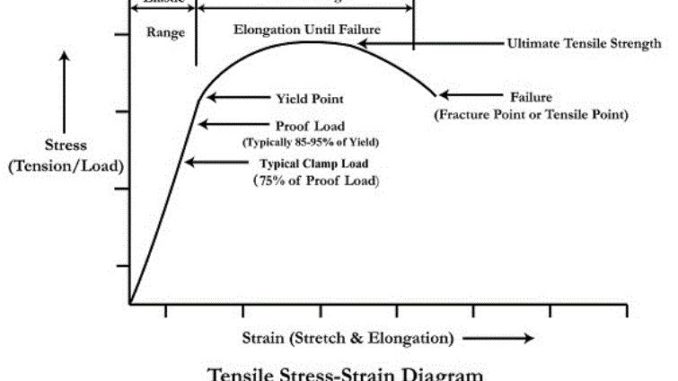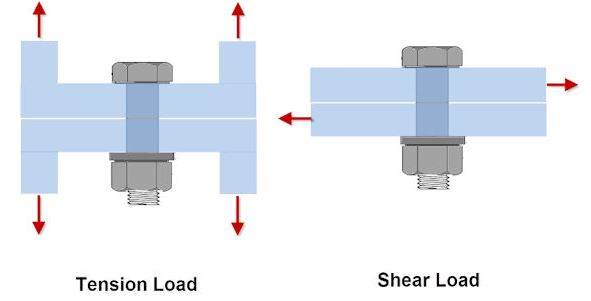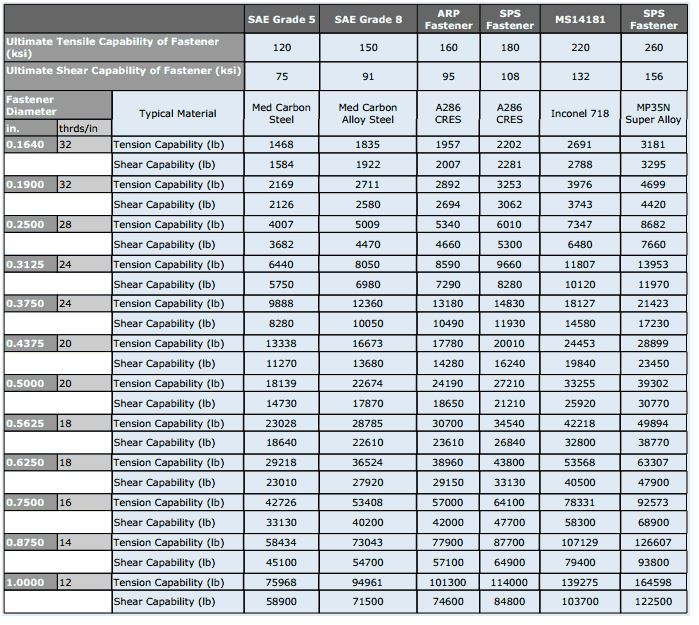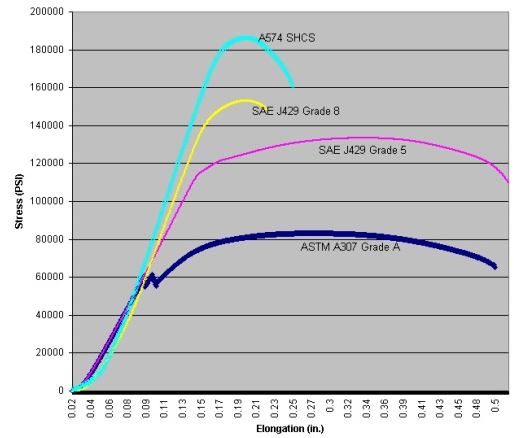
One common misconception about bolts is that a higher rated bolt is stronger, yet more brittle, and therefore lower grades should be used in places like in suspension systems so they can deform rather then break. This is wrong!
There are two types of forces a bolt experiences, tension and shear. One goes up and down while the other goes side to side.

Its often in the shear aspect that people assume lower grade bolts are better in places like suspension systems.
However, as you can see in the following table, both tension and shear are higher in Grade 8 bolts over Grade 5 bolts; in fact over 21% higher in shear and 25% in tension. The same is true in metric when comparing 8.8 vs 10.9.

To be fair, the higher the grade of bolt, the harder it becomes as rated by the rockwell scale.
Therefore, technically a Grade 5 bolt is softer, and therefore spends more time deforming before failure. This time and area of deformation is called the plastic range.

However, as you can see by this graph, even though the Grade 8 bolt spends much less time in its plastic range, it doesn’t even get into the plastic range until it experiences over 21% more force. This same 21% of force, would have elongated and sheared the Grade 5 bolt.

So to use a lower grade bolt for the the purposes of it bending versus breaking, unfortunately that is incorrect. The lower grade bolt will reach its maximum elongation and reach its fracture point well before the higher grade even begins deforming.

I have extensive experience in the automotive industry, and while your technical explanation of bolt strength is certainly correct, it does not account for environmental conditions. High strength bolts are frequently restricted by company policies for use in areas of an automobile that are subject to corrosive environments (like suspensions and under hood). They are susceptible to stress corrosion that will make them brittle and greatly reduce their strength. The restriction also limits the use of plating on higher strength bolts due to hydrogen embrittlement concerns in combination with the corrosive environment. There have been product recalls over the years due to these two issues. If you are replacing fasteners on your car, match the old ones carefully for strength and plating type if you cannot obtain a factory bolt.
As an engineer with two decades of experience in the marine industry, I concur with Dan. Shear and tension in ideal settings is only one factor when deciding a fastener. In addition to hydrogen embrittlement, and stress corrosion cracking, you also need to look at fatigue. I think a lot of the folk wisdom regarding the “bend don’t break” in favor of Grade 5 is based on experience in non ideal conditions in which Grade 5 will generally perform better over thousands of cycles. Engineering isn’t an exact science with a right or wrong answer; its often a balance of various parameters to best meet your requirements. Each situation needs to be evaluated before saying one option is better than another. That said, I often use both Grade 5 and Grade 8 in my work, along with other non-ferrous fasteners based on the environment they will be operating in, vice solely on the load they will see.
The elongation of grade 8 is much less than that of grade 5. Materials that undergo less deformation before breaking are by definition more brittle.
The energy that can be absorbed in an impact is a function of the area under the curve.
> This same 21% of force, would have elongated and sheared the Grade 5 bolt.
Only if applied for a long enough time. An impact with high enough peak force will deform both and will break the grade 8 faster according to your plot.